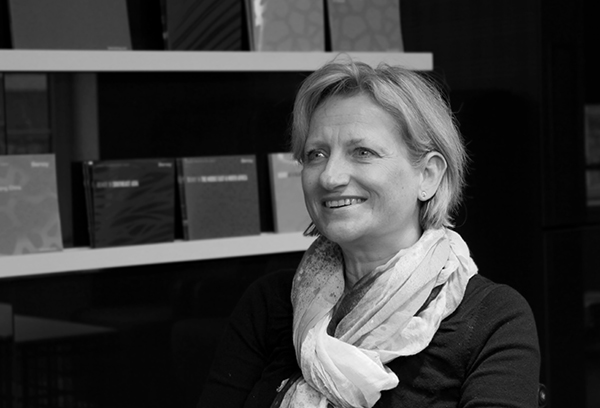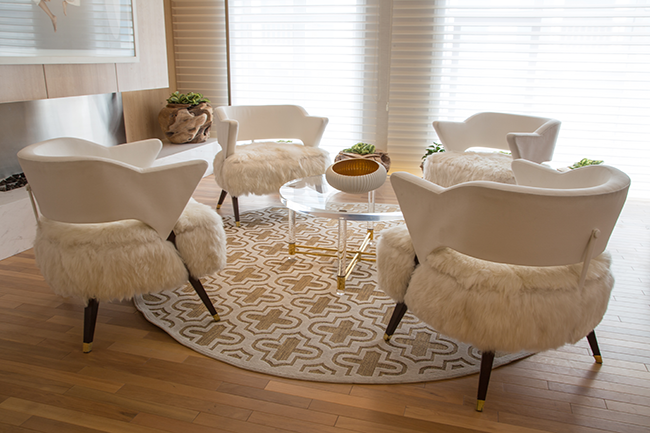London Design Fair 2018 will be a truly global affair, with the strongest presence of international exhibitors to date. From Denmark to Dubai and Sweden to South Korea, the Fair promises to be a melting pot of design from a wide range of cultures. Twelve country pavilions and one very special guest country—Japan—will exhibit an impressive array of products, alongside a smart international line-up of independent designers and brands. Moreover, London Design Fair welcomes the return of Envisions with ‘Wood in Progress’ and the Material of the Year: Plastic. These two feature exhibitions aim to provoke audiences, sparking conversation and encouraging new ways of thinking about design at the present time.The following country pavilions, features and brands are a selection of the international flavour and design expertise visitors can expect to find at London Design Fair 2018.
Country Pavilions
Denmark’s zest for furniture will come to life in a real-world Danish living room. A specially curated mix of new and heritage Danish brands will highlight the nation’s design prowess and commitment to excellence in craftsmanship. Iconic and contemporary designs will sit side by side, showcasing Denmark’s contribution to design in a range of disciplines: furniture, flooring, lighting, homeware and sound.
The Danish Living Room is co-financed by The Trade Council of Denmark, facilitated by the Embassy of Denmark in London and sponsored by Junckers (a Danish manufacturer of solid wood flooring). Exhibiting brands include: Arttiles, BoConcept, Dottir, Eberhart, Fritz Hansen, Georg Jensen, Junckers, LOP Furniture, Made by Toft, Mobel & Rum, Morso, Noorstad, Overgaard & Dyrman, Skovby, Spekva and Tom Rossau.
South Korea: Seoul Design Festival
Since 2002, Seoul Design Festival has supported up-and-coming Korean designers and design brands; the quintessential design event in Korea, the festival promotes more than 200 designers and brands every year. With its motto ‘Designer Promotion’, Seoul Design Festival aims to enhance the competitiveness of both Korean designers and the Korean design sector.
Graduating from Hongik University, Seoul, in 2009, Jiyoun Kim worked with the North American branch of Pantech Mobile Device Design for five years—during this time he established Jiyoun Kim Studio. Today, Kim works across multiple disciplines, including product design, branding, living products and art. The Dokkaebi Stool (pictured) was created by Kim as part of a larger art installation in the Hangang Art Park, by the Han River in Seoul. Founded by Seoul-based designers Byounghwi Jeon and Seungjoon Song, Studio PESI seeks to find new possibilities in design, by reinterpreting objects without losing their essential elements. PESI is an acronym for ‘Possibility, Essential, Standpoint, Interpretation’: the studio approaches design in a manner that is experiential, lively and cheerful.
Czech Republic: UMPRUM
UMPRUM—the Academy of Arts, Architecture & Design in Prague—was established in 1885. Since that time, this prestigious institution has flourished: ranked among the best educational establishments in the Czech Republic, it has many successful graduates and is the only Eastern European school to figure in the indices of prestigious European and world art schools.
The Studio of Glass at UMPRUM will present ‘Colours of Transparency’, showcasing the latest body of imaginative works by students. Pellucidity and hue, as related to glass, form the central theme of the exhibition. The Studio of Glass experiments with the boundaries between applied and fine arts, crafting glass and then artistically disrupting it—students work with paint, disrupting classic design concepts and are not afraid to experiment.
Colours of Transparency exhibition space will reflect the ubiquitous ambiguity of glass. Spray paint will obscure the view while simultaneously accentuating and highlighting the space, so challenging the distinction between vandalism and art.
Netherlands: Dutch Stuff
Dutch Stuff returns to the London Design Fair following its debut in 2017. With a focus on quality, this year’s showcase will prioritise space to interact with and think about those designers, products and ideas driving contemporary Dutch design. REM Atelier, a collaborative art and design project set up in 2015 by artist Remty Elenga and designer Remco van Halderen, investigates artistic objects and installations from the viewpoint of functionality and decor. Rather than merely decorate a space, the unique and limited edition objects by REM Atelier create an alternative space, subjecting the surroundings to the artwork. To create the Botanic light piece, REM Atelier worked with sculptured photography—flat images placed between plexiglass create an illusion of depth. Studio Laurids Gallee has experimented with traditional marquetry and inlay techniques. Together with computer programming and modern machinery, the studio created a technique that reintroduces the decorative art of marquetry (an art that has suffered at the hands of mass production).
Features
During 2018, plastic has grown exponentially to become a pariah in the minds of many designers and consumers alike. As governments strive to tackle and ban ‘single-use’ plastic, and increasing amounts of microplastic are found in fish, we are left with an obvious problem: what to do with the difficulties posed by plastic? London Design Fair chose plastic as the 2018 Material of the Year, in a bid to showcase and celebrate just some of the designers who are engaging head-on with the significant environmental issues posed by plastic. Material designer Charlotte Kidger recently graduated from Central Saint Martins with an MA in Material Futures. Working with polyurethane foam dust, a by-product of CNC fabrication, she has created a versatile and durable composite material. The composite is processed by means of cold casting to create 3D objects. Kidger will show her collection of large-scale tables and vessels at the Fair. Dirk Vander Kooij graduated in 2009 from Design Academy Eindhoven. A craftsman and inventor, he is best known for his playful extrusions of reclaimed synthetics. Using an in-house-designed robot and materials recycled from a range of polycarbonate products, Vander Kooij applies low-resolution 3D printing in furniture production. Vander Kooij will exhibit the ‘buitenhuis’ chandelier at the Fair, shown in the UK for the first time.
Envisions x Finsa
Envisions is a collective of twenty four multidisciplinary designers, who share a fascination for experimental design. At Envisions, the focus is on the creative, research process and not the end product. With this approach, Envisions makes use of material experiments and works with companies to offer new insights on their existing production processes, products and techniques. Envisions was founded by Sanne Schuurman, Simone Post and Iwan Pol, after the trio graduated from Design Academy Eindhoven in 2015. The Envisions collective came about because the founders realised their product-rich, post-academy world lacked the open arena, conversation and ideas on ‘working towards a result’ they had enjoyed at the Design Academy. By acknowledging and showcasing the design process itself, Envisions created the basis for interaction and exchange, challenging the design industry to an open dialogue.
Envisions approached Finsa, a wood manufacturer headquartered in Santiago de Compostela, Spain, and twelve designers were invited to infiltrate Finsa’s production grounds and free their individualised creativity. The result—Wood in Progress—shows twelve distinctive processes that highlight the ‘pioneering potential of the unhindered imaginations of industry outsiders.’
Brands
From Toronto, Canada, Hi Thanks Bye is the collaborative effort of Stein Wang and Topher Kong. Using a mix of cultural and academic experiences and references, the two designers exchange ideas on the meaning of furniture and interior space in modern contemporary living. The debut collection from Hi Thanks Bye—collection 0—is a sculptural interpretation of the Canadian landscape combined with a Chinese aesthetic. The entire collection is made using powder-coated stainless steel (with the exception of upholstery pieces). Functional and versatile, designs include the U0 shelf, V0 side table and R0 dining chair.






